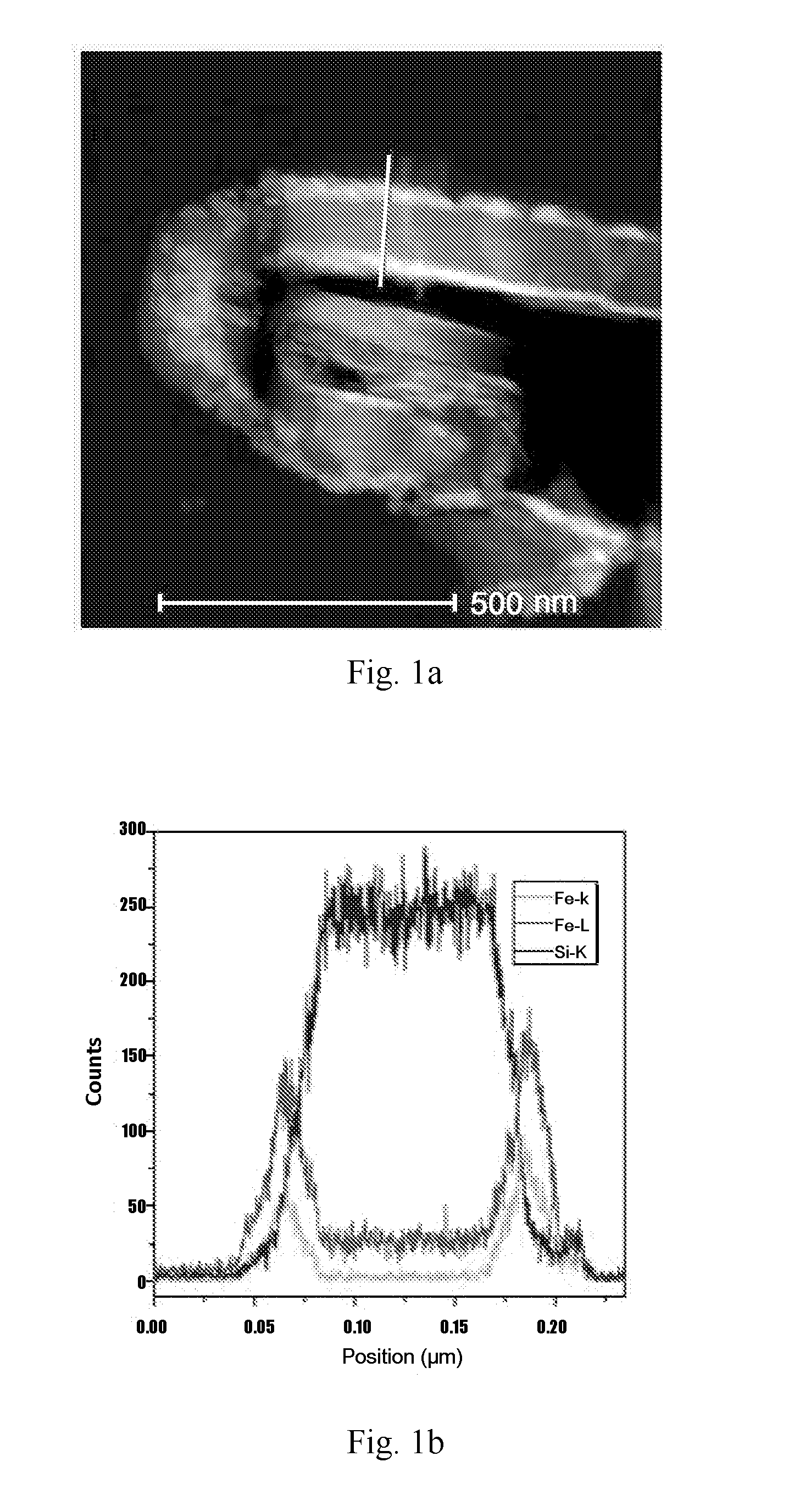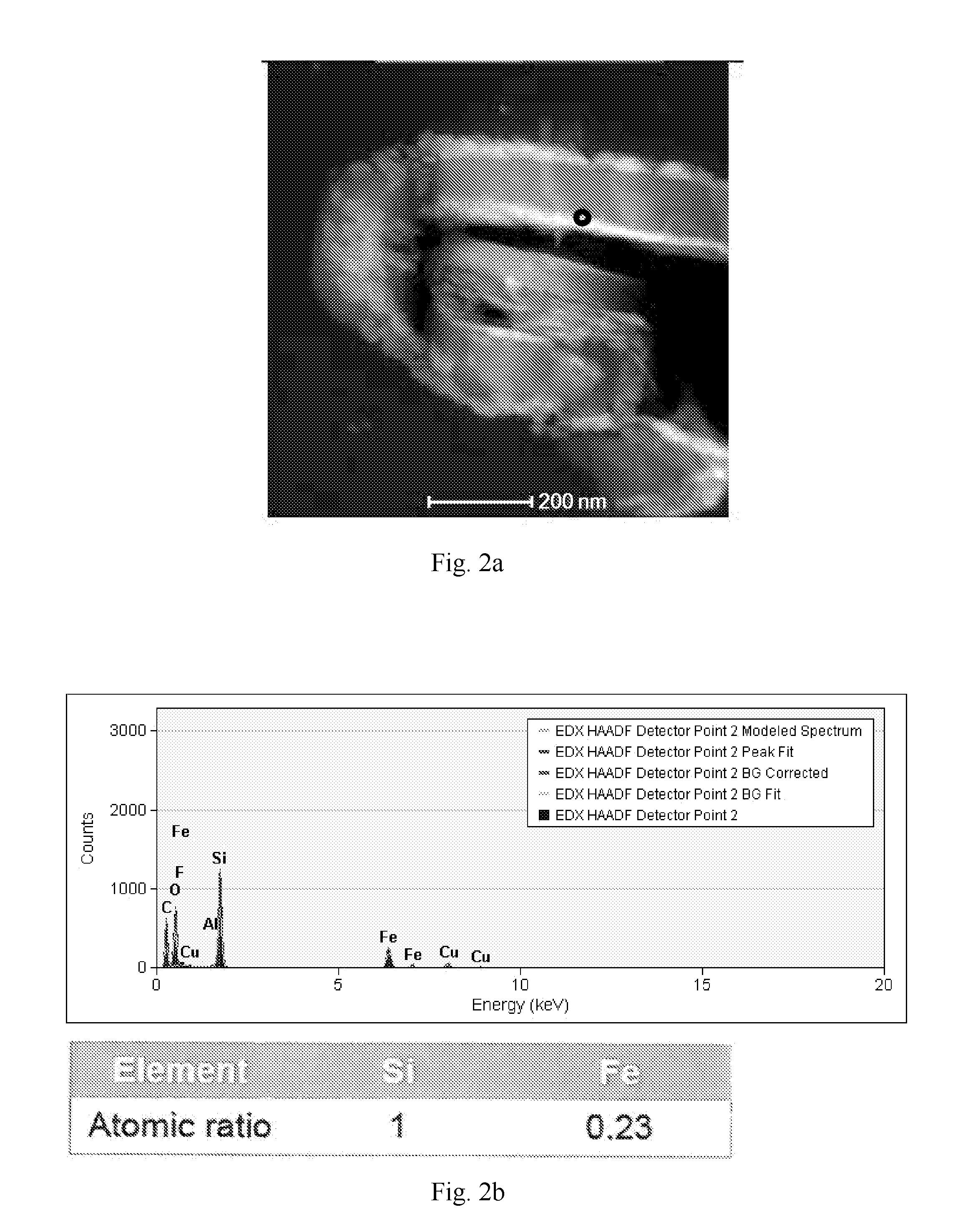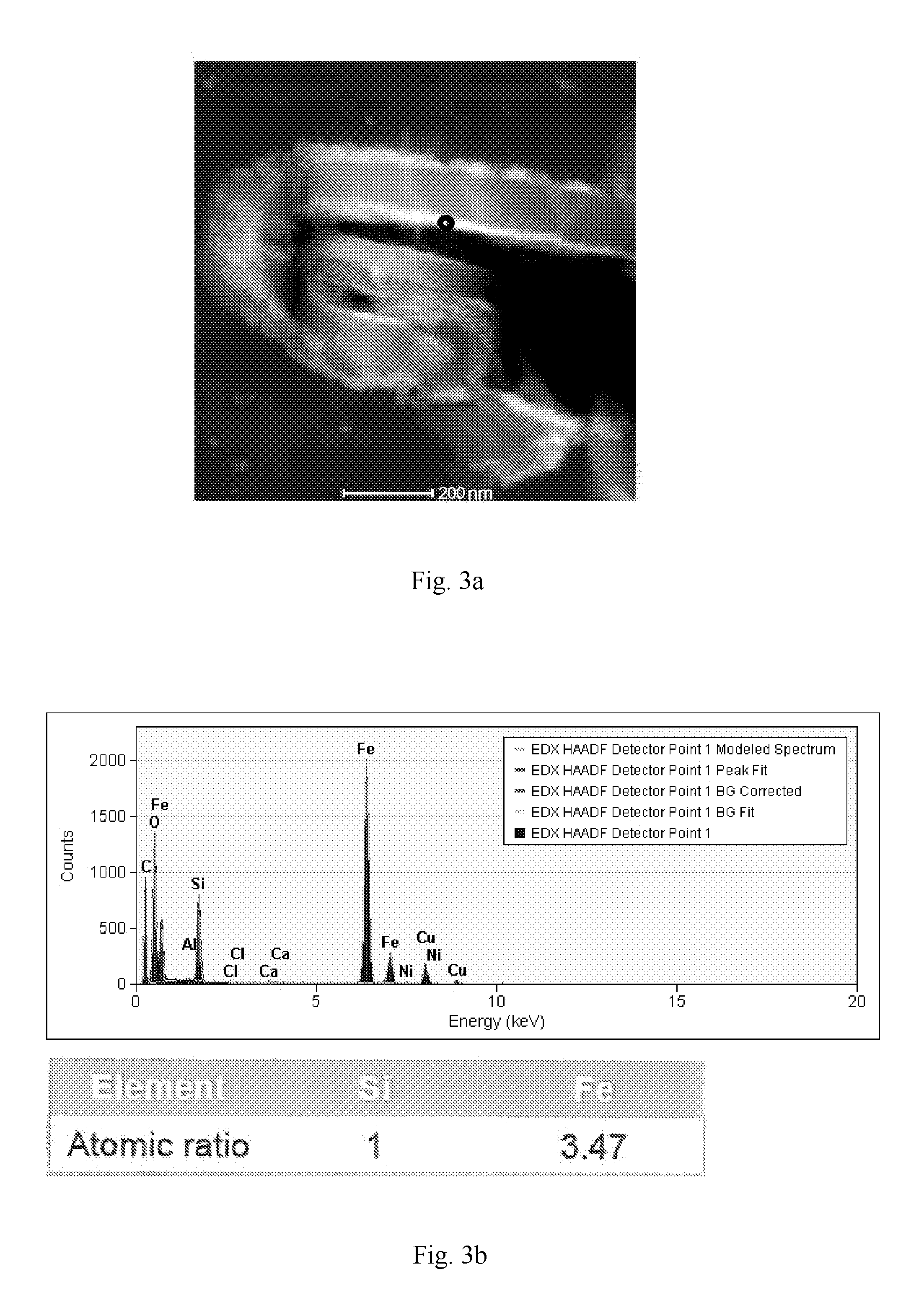Angle-dependent Interference Pigments
a technology which is applied in the field of interference pigments and angle-dependent interference pigments, can solve the problems of limiting the application of pigments in cosmetics and automobile finishes, poor color saturation, etc., and achieves high color saturation, low refractive index, and high refractive index.
- Summary
- Abstract
- Description
- Claims
- Application Information
AI Technical Summary
Benefits of technology
Problems solved by technology
Method used
Image
Examples
example 1
[0037]Structure: sheet glass / mixture of ferric oxide and ferric silicate / silicon oxide / mixture of ferric oxide and ferric silicate
[0038]100 g of sheet glass (sodium calcium silicate) having a thickness of 2-3 micrometers and a particle diameter of 30-50 micrometers is obtained. Ferric trichloride or ferric sulfate solution is hydrolyzed on the surface of the sheet glass at a temperature of 80° C. and a pH of 4.0 to deposit a layer containing iron oxide hydroxides. Subsequently, sodium silicate solution is hydrolyzed at a temperature of 80° C. and a pH of 9 to deposit a silicon oxide hydroxides layer. Finally, ferric trichloride or ferric sulfate solution is again hydrolyzed at a temperature of 80° C. and a pH of 4.0 to deposit a second layer of iron oxide hydroxides. The thickness of respective layer (coating) is controlled by the addition amount of ferric salt solution and sodium silicate solution. The slurry is filtered, dried at 150° C. and then calcined at 700° C. for 1 hour. Du...
example 2
[0043]Structure: muscovitize mica / mixture of titanium dioxide and titanium silicate or titanosilicate / silicon oxide / mixture of titanium dioxide and titanium silicate or titanosilicate
[0044]16 g of muscovitize mica powder having a particle diameter of 10-60 micrometers is obtained. Titanium tetrachloride solution is hydrolyzed on the surface of the muscovitize mica at a temperature of 75° C. and a pH of 2.5 to deposit a layer containing titanium dioxide hydroxides. Subsequently, sodium silicate solution is hydrolyzed at a temperature of 80° C. and a pH of 8.5 to deposit a silicon oxide hydroxides layer. Finally, titanium tetrachloride solution is hydrolyzed at a temperature of 75° C. and a pH of 2.5 to deposit a second layer of titanium dioxide hydroxides. The thickness of respective layer (coating) is controlled by the addition amount of titanium tetrachloride solution and sodium silicate solution. The slurry is filtered, dried at 150° C. and then calcined at 800° C. for 1 hour. Due...
example 3
[0046]Structure: sheet glass / mixture of ferric oxide and ferric silicate / silicon oxide / mixture of ferric oxide and ferric silicate / mixture of aluminum oxide and silicon oxide
[0047]The pigment prepared by example 1 is suspended in deionized water. Aluminum chloride solution is hydrolyzed on the surface of the pigment at a temperature of 75° C. and a pH of 5 to deposit an aluminum oxide hydroxides layer. The slurry is stirred for 15 min and adjusted to pH 8.5 using sodium hydroxide. To the slurry is added sodium silicate solution until a desired thickness is obtained. The slurry is filtered, dried and calcined to obtain a pigment with a structure of sheet glass / mixture of ferric oxide and ferric silicate / silicon oxide / mixture of ferric oxide and ferric silicate / mixture of aluminum oxide and silicon oxide. The thickness of the protective layer of mixture of aluminum oxide and silicon oxide can be controlled through the addition amount of the aluminum chloride solution and sodium silica...
PUM
| Property | Measurement | Unit |
|---|---|---|
| Thickness | aaaaa | aaaaa |
| Thickness | aaaaa | aaaaa |
| Thickness | aaaaa | aaaaa |
Abstract
Description
Claims
Application Information
 Login to View More
Login to View More - R&D
- Intellectual Property
- Life Sciences
- Materials
- Tech Scout
- Unparalleled Data Quality
- Higher Quality Content
- 60% Fewer Hallucinations
Browse by: Latest US Patents, China's latest patents, Technical Efficacy Thesaurus, Application Domain, Technology Topic, Popular Technical Reports.
© 2025 PatSnap. All rights reserved.Legal|Privacy policy|Modern Slavery Act Transparency Statement|Sitemap|About US| Contact US: help@patsnap.com



